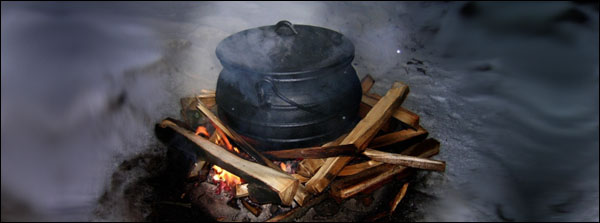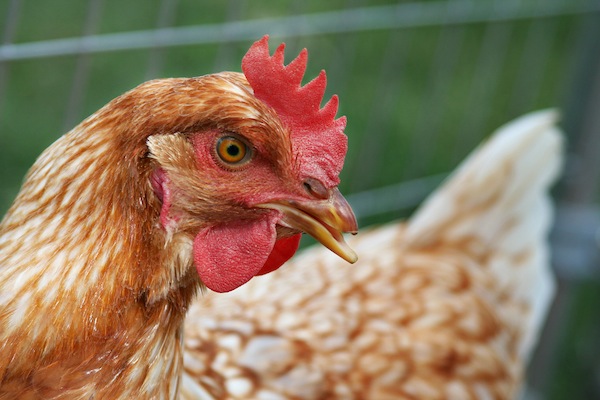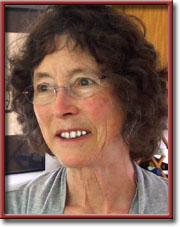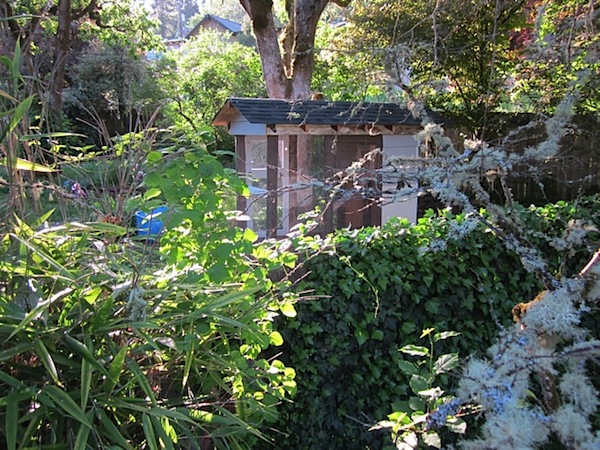And The Song of the Chicken is Heard in the Land

“Wait! I squawk, waving my hand in the air. Maybe there is more to the plot than this bleak scenario. Consider the chicken and its mysteries. For example: a few months ago, when the weather was warm and I was working out in the garden, I heard a lone chicken voice rising above the general gabble on the other side of the fence—in song. For a good two seconds a distinct musical tone rang out. Immediately, I dashed inside, humming the note before I could forget. On the piano, it sounded a perfect B-flat above Middle C!”—Anita Sullivan
The Highest Cauldron
By Anita Sullivan

 EUGENE Oregon—(Weekly Hubris)—12/16/2013—Consider the chicken.
EUGENE Oregon—(Weekly Hubris)—12/16/2013—Consider the chicken.
OK.
Now—consider the wild chicken.
Hey! Wait a minute, the what?!
On a cold winter morning, feeling blessed to be sitting in a warm room drinking coffee with my husband and contemplating fresh eggs on my plate I heard, through the double-paned window glass, a sound like children on a distant playground. Rapidly, I translated it into my next-door neighbors’ happy, free-range hens galloping around the backyard.
“I never realized how much chickens sound like children playing!” I said.
“. . . or, how much children sound like chickens,” he replied.
“Which came first, the chickens or the children?” we both said.
Well, that’s got to be a no-brainer—they both came at once. I mean, can you imagine a domestic chicken making it through those last stages of the evolutionary process (the last 5,000 years) alone?
Even if you factor in the recent rapid adjustments certain living things have developed to thrive in the urban wilderness? Among those we might include raccoons, deer, turkeys, squirrels, and stray cats, dogs and other escaped family pets. Do you ever see a starling try to cross the Interstate? But, chickens?
Surely, there must be a metaphor here for something that will keep humans from going extinct within the next 50 years?

Yes, I/m not kidding, look it up on Chickapedia. The narrative goes something like this: There have been five mass extinctions on Planet Earth in geologic history. The last one (and I forget the exact year it took place) annihilated somewhere around 95 percent of all living things. It was caused by the rapid heating of the atmosphere by off-gassing from various naturally-caused seismic systems such as volcanoes.
And speaking of off-gassing, consider Extinction No. 6. This one is (rapidly) shaping up to be quite similar to the last, whenever human-caused global warming finally sets off a runaway climate change caused by the “thawing out” of currently frozen blocks of matter deep under the seas. These contain massive amounts of methane gas which, when released in large clouds, will burn up the atmosphere so that we will all go Poof! The final stages of the triggering episode are happening right now, say geologists and climatologists.
Methane gas is a lot faster-acting than mere carbon dioxide. The more methane, the more heat; the more heat, the more methane. You get the gist, right? Pretty soon Bob’s your Uncle, and all your careful efforts at learning how to knit are to no avail.
“Wait!” I squawk, waving my hand in the air. “Maybe there is more to the plot than this bleak scenario. Consider the chicken and its mysteries.”
For example: a few months ago, when the weather was warm and I was working out in the garden, I heard a lone chicken voice rising above the general gabble on the other side of the fence—in song. For a good two seconds a distinct musical tone rang out. Immediately, I dashed inside, humming the note before I could forget. On the piano, it sounded a perfect B-flat above Middle C!
Isn’t this proof that something is going on out there that is beyond our current philosophy?
By the time I returned to the garden, the chickens were oinking and murmuring again.
Such a chatty, comfortable noise—as if a clutch of snakes stirring inside a stone were causing its surface to shape-shift.
As if an entire population of humans wordlessly agreed that extinction is one step too far, even for us.